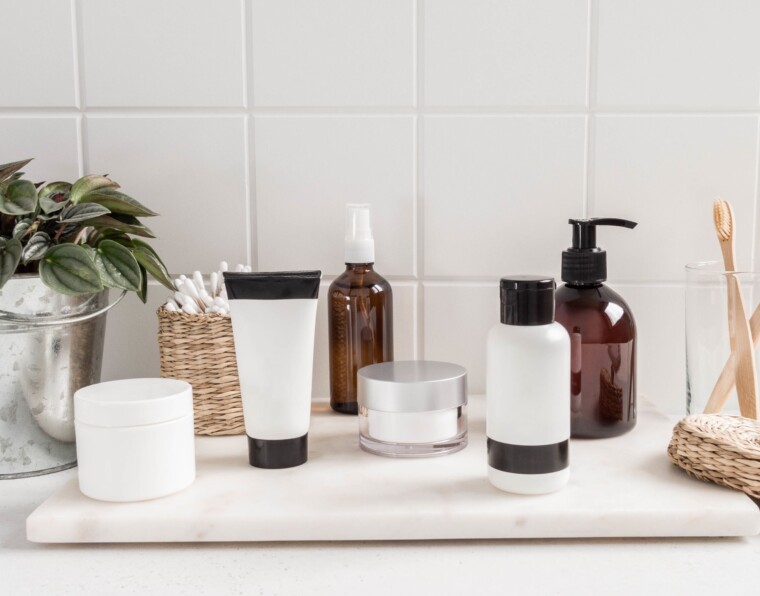Having acne-prone skin can be a challenge, but with the right skincare routine, you can keep breakouts to a minimum. Skincare layering is a popular and effective way to create a customized routine for your unique skin type. Layering products in the right order and using the right ingredients can help you keep acne at bay and achieve healthy, glowing skin.
What is Skincare Layering?
Skincare layering is the practice of applying multiple skincare products in a specific order. The idea is that each product works synergistically with the next to provide maximum benefit. The order in which products are applied is important because it ensures that each product can penetrate the skin and work effectively.
Benefits of Skincare Layering for Acne-Prone Skin
Layering skincare products can help reduce breakouts, improve the appearance of acne scars, and hydrate the skin. It can also help balance oil production, reduce inflammation, and protect against environmental damage.
Understanding Your Unique Skin Type
Before beginning a layering routine, it’s important to understand your unique skin type. This will help you determine which products will work best for you and how often to use them. Generally, acne-prone skin is classified as oily, dry, or combination.
Step-by-Step Guide to Skincare Layering for Acne-Prone Skin
Once you’ve identified your skin type, you can begin layering products. The order in which you apply them is important for maximum absorption and effectiveness.
Cleanser: Start by cleansing your face with a gentle, oil-free cleanser. This will help remove dirt, oil, and makeup, and prepare your skin for the next steps.
Toner: After cleansing, use a toner to balance your skin’s pH levels and to remove any remaining dirt and oil. Look for an alcohol-free toner that won’t dry out the skin.
Serum: Next, apply a serum that is specifically designed for acne-prone skin. This will help to reduce inflammation, balance oil production, and improve the appearance of acne scars.
Moisturizer: After the serum, use a lightweight moisturizer to hydrate the skin without clogging pores. Choose one that is specifically formulated for acne-prone skin.
Sunscreen: During the day, be sure to apply a broad-spectrum sunscreen with at least SPF 30. This will protect your skin from the sun’s damaging UV rays and help prevent breakouts.
How to Choose the Best Products for Acne-Prone Skin
When choosing products for your skincare routine, it’s important to consider your skin type and look for ingredients that are proven to be effective for acne.
Tips for Choosing the Right Products:
• Look for natural, non-comedogenic ingredients
• Avoid products with fragrances and dyes
• Choose oil-free and alcohol-free products
Ingredients to Look For:
• Salicylic acid: Helps to exfoliate the skin, reduce inflammation, and unclog pores
• Benzoyl peroxide: Helps kill bacteria and reduce inflammation
• Niacinamide: Helps to reduce redness and inflammation
• Retinoid: Helps to reduce acne and improve the appearance of acne scars
Ingredients to Avoid:
• Fragrances
• Mineral oil
• Petroleum
• Parabens
Common Mistakes to Avoid When Skincare Layering for Acne-Prone Skin
Skincare layering for acne-prone skin can be tricky, so it’s important to avoid making some common mistakes.
• Not using enough products for your skin type – Acne-prone skin needs more hydration than other skin types, so be sure to include a good moisturizer in your routine.
• Overdoing it with too many products – Too many products can lead to dryness and irritation, so stick to the basics and only use what your skin needs.
• Not changing your routine when your skin needs it – Your skin changes over time, so it’s important to adjust your routine as needed to meet your skin’s changing needs.
Skincare Layering for Acne-Prone Skin: Conclusion
Layering skincare products for acne-prone skin can help reduce breakouts, balance oil production, and improve the appearance of acne scars. By understanding your unique skin type and selecting the right products for your routine, you can achieve healthy, glowing skin.
FAQ
1) Can acne prone skin use vitamin c serum?
Yes, acne prone skin can use vitamin C serum. Vitamin C is an antioxidant that helps to repair and protect skin from further damage. It can also help reduce inflammation and promote healing of acne lesions. However, it is important to choose the right vitamin C serum for your skin type and follow the instructions carefully to avoid irritation.
2) Can acne prone skin use cleansing oil?
Yes, acne prone skin can use cleansing oil. Cleansing oils can help to remove excess oil, dirt, and makeup without stripping the skin of its natural oils. It’s important to choose an oil that is specifically made for acne-prone skin and to avoid those that are too heavy or comedogenic.
3) How does acne prone skin look like?
Acne-prone skin often looks oily, red, or inflamed, and may have blackheads, whiteheads, or cysts. It may also be sensitive to products that are designed to treat acne.
4) How to exfoliate acne-prone skin naturally?
Exfoliating acne-prone skin naturally can be done with gentle ingredients like oatmeal, honey, yogurt, or baking soda. Start by mixing one tablespoon of oatmeal with one tablespoon of honey, and then apply to the face for 10 minutes. Afterwards, rinse with lukewarm water. Other natural ingredients like yogurt, baking soda, and tomato juice can also be used to exfoliate the skin.
5) When acne goes away?
The time it takes for acne to go away can vary from person to person. Generally, it takes about 4-6 weeks for acne to clear up. However, if your acne is severe or persistent, it’s important to seek professional help from a dermatologist.



